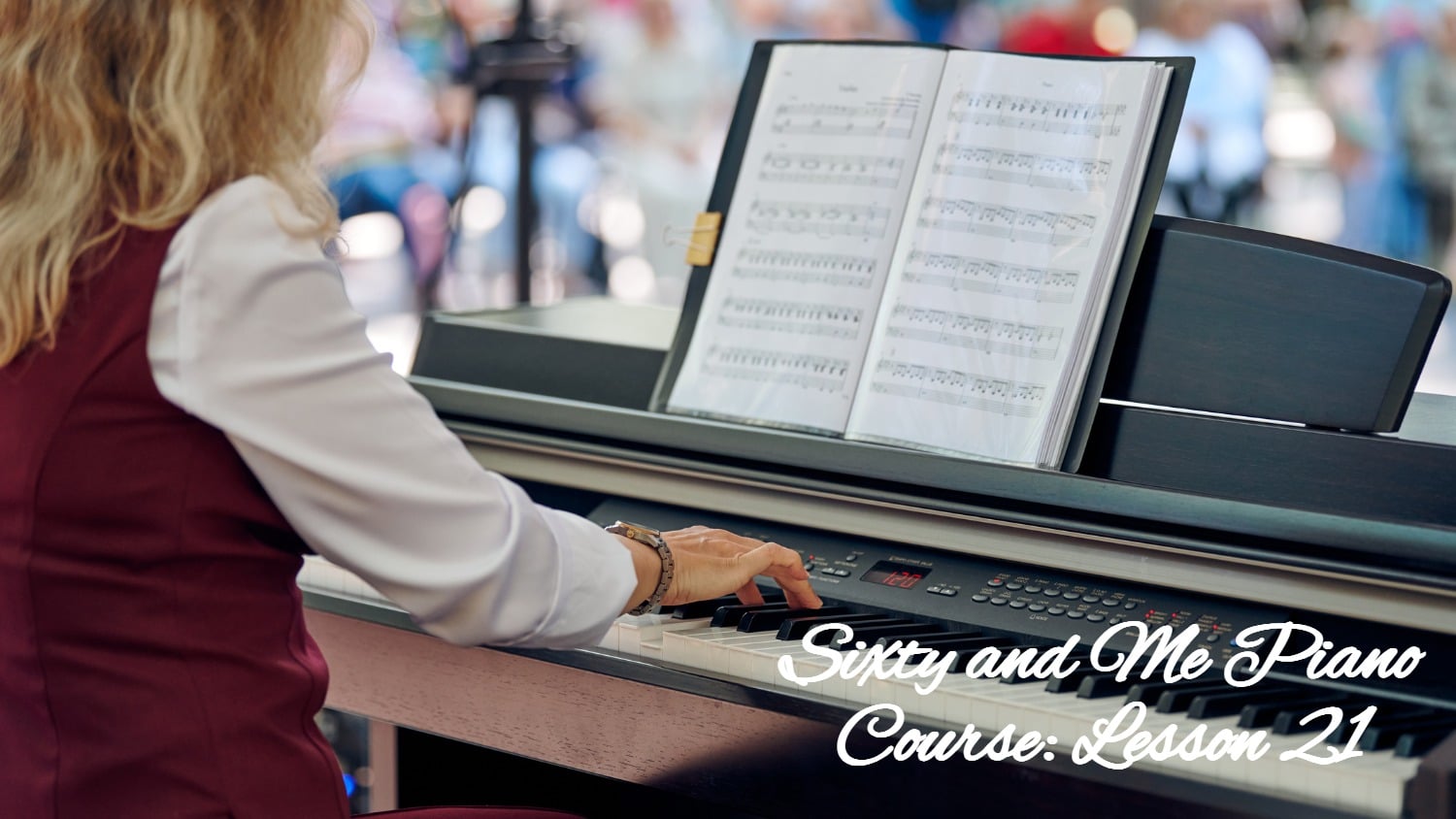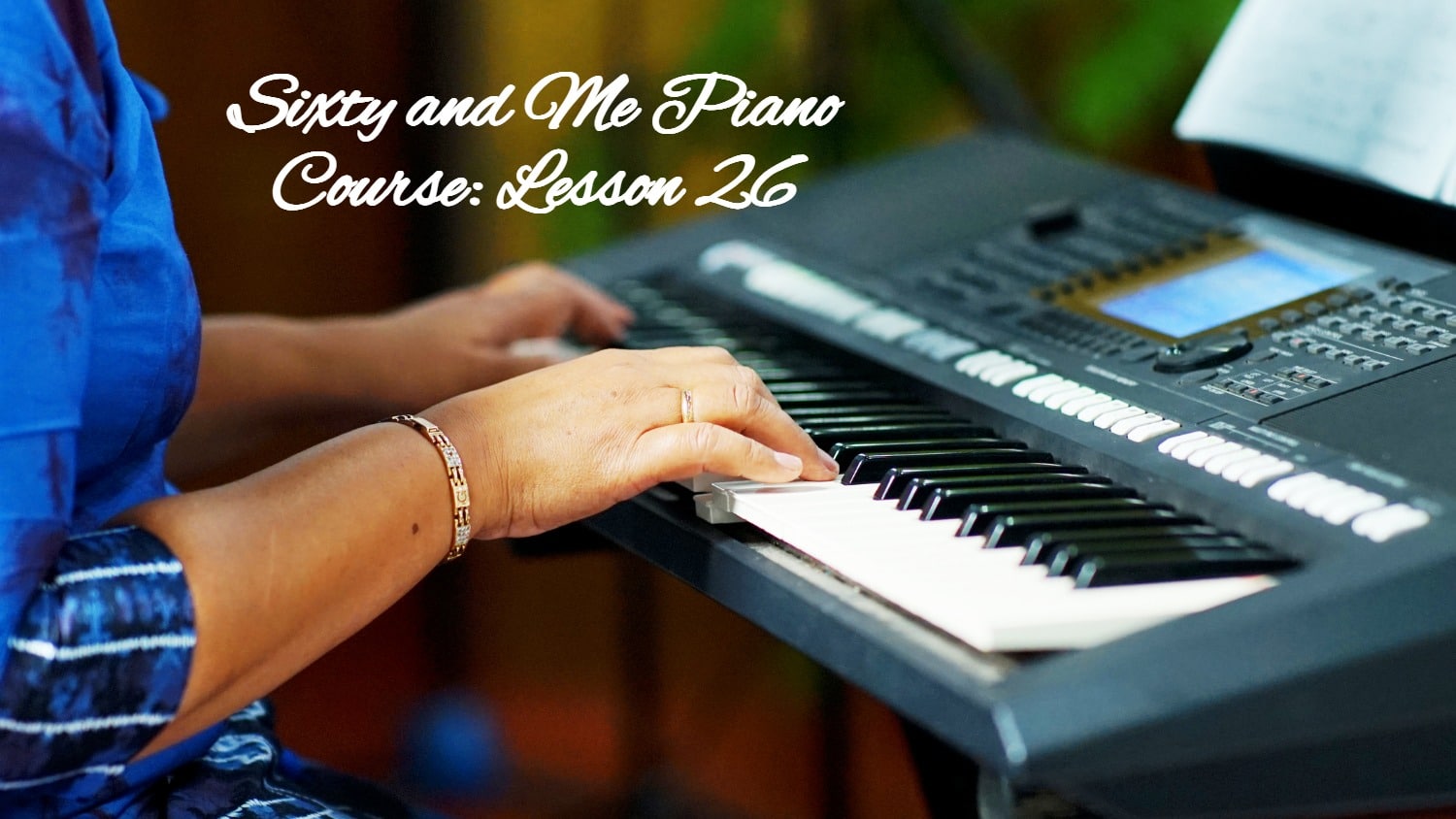
Piano Lesson 21: Expand Your Musical Mind
It’s LESSON 21 today, and I’m excited to show you some new things to expand your musical mind!
[NOTE: If you are just joining us for the first time, you can find my previous Sixty and Me Free Piano Lessons on my Author page. You can join our lessons any time and move at your own pace!]
One of the best ways to study rhythm is to write words to pair with the notes, as we did in the Rhythm Review on p. 53 in our Upper Hands Piano, BOOK 1. When students are having trouble playing a particular rhythm, I will often come up with a phrase to help them remember it. For example, for Spring on p.63, I might write in and sing this phrase for the melody (from the beginning to the 1st ending):
“A |can-ta-loupe is a | fruit, oh a |can-ta-loupe is a | fruit, and it | tastes ve-ry good to| me. A|”
I picked the word “cantaloupe” because the first syllable is stressed: CAN-ta-loupe, and in music, the first beat of each measure is usually the strongest.
21.1 Your Musical Mind p.64-66
Besides helping us to learn rhythm, writing lyrics is a fun, creative process that activates multiple regions of the brain. Today I ask you to write lyrics for the song on p.64. Your lyrics should fit the rhythm of the notes, but they can be about absolutely anything: silly or serious, meaningful or nonsensical.
Composing lyrics isn’t easy, but stick with it until you find lyrics you like. After you write lyrics, come up with a title for your song, and write it on the title line provided. Then practice playing and singing the song. Creating lyrics and playing and singing them is a super brain workout.
At the top of p. 65, I suggest you play the song using a metronome. For more about writing lyrics, playing to a metronome beat, and playing Taps with fermatas, watch my video:
Musical Mind Games
Speaking of brain boosts, you also have a couple Musical Mind Games within these pages. At the bottom of p.64, you will find 8 musical analograms, or analogy questions. See if you can fill in the blanks, then check your answers on the answers page of my website. On p.66, fill in the letters to make words. Then insert the words into the limerick below. Hint: The last word in the 1st, 2nd and 4th lines should rhyme.
If these activities feel difficult, just try to push through. You can do it! Remember, it is those challenges that make piano study so great for your brain.
21.2 Song Demonstration with Metronome, p.64
Once you feel comfortable playing the notes with the correct rhythm on p.64, trying playing it with a metronome (or a metronome app), or with me:
Start with your metronome at 70 beats per minute (bpm), and if you can stay with the beat, you can try it a little faster. To know for sure if you are staying with the beat, record yourself playing with the metronome. (You can record using the Voice Memo app on an iPhone, and I believe other phones and devices have similar apps.) Listen to make sure that each of your beats is falling on a metronome beat.
Passion Practice
- Exercise #4 – Play in D and A with each hand. Try playing it using a metronome set to 3/4 time, at whatever tempo (speed) you can, playing it without pausing. (Note: You’ll have to play around with your metronome app to see how to change the time signature from 4/4 to 3/4. On mine, you tap the 4 at the bottom to change the first number to 3.) Hold each quarter note for 1 beat, and hold the dotted half note Major/Augmented/Major chords at the end for 3 beats.
- Untitled Song p.64 – Watch my demonstration video 21.2 above then play through the song (left hand only) until you feel comfortable with the rhythm. Try playing to a metronome beat of 70 bpm (as demonstrated). Also: 1st week: Create lyrics to fit the rhythm. 2nd week: Play and sing the song! Add your title.
- Chord Calisthenics #4, Appendix viii– Play the 1st 4 minor triads: Cm, Gm, Dm and Am as whole notes with each hand. Using a metronome, hold each chord for 4 metronome beats at 70 bpm as demonstrated here.
- Taps, p.65 – Watch my demonstration video 21.3 above, then play Taps, holding the notes with fermatas over them longer than their note values. Don’t use a metronome for this song!
- Do the Musical Mind Games on p.64-65. (Answers to p.64 puzzle here.)
- As time permits, review The Saints on p. 37, or Spring on p.63.
Let’s Have a Conversation:
Though everything about listening to and learning how to play music deeply engages the brain, doing something difficult and creative, such as writing lyrics and solving musical puzzles, is particularly effective brain exercise. Are you taking our piano lessons for the brain benefits, or because you love music? Have you noticed your brain functioning better since you started our lessons? What else do you do to train your brain?
Tags Piano Lessons






